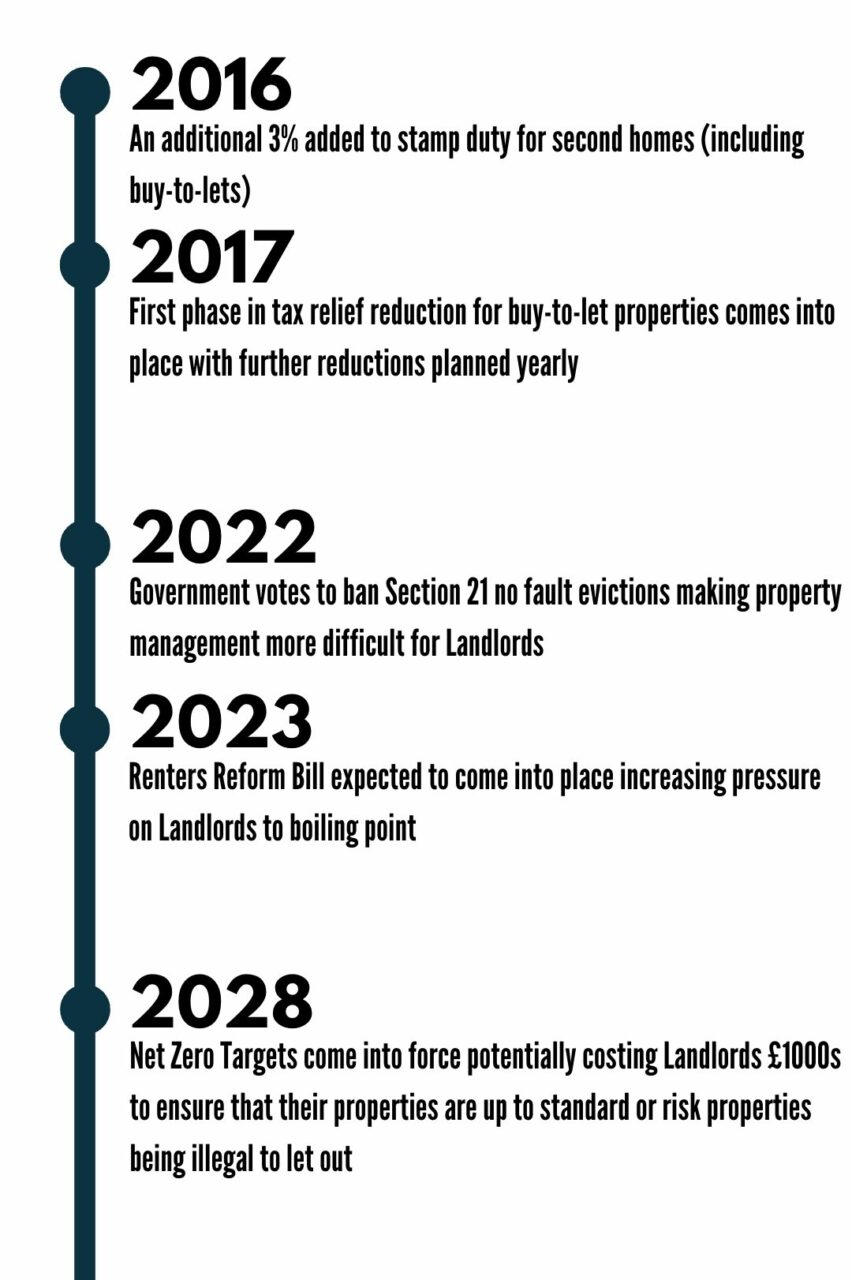Article

A fter years of hostile legislation and interference from the Government, we may finally be at a point where buy-to-let investments are no longer worthwhile investments, in fact, it is predicted that many buy-to-let properties may become loss-making by the end of this year. Many factors that have been brewing for years now all impeding the profitability of the buy-to-let market and unfortunately there are plenty more factors still to come.

Not only has the buy-to-let market been forced to endure the barrage of constrictive legislation from the UK government but a slew of economic factors have also been eating into the profits that landlords can hope to redeem from their investments. Rising interest rates are making the cost of buy-to-let mortgages skyrocket, further whittling down the already narrow profit margins that buy-to-let landlords achieve. A Capital Economics report revealed that hundreds of thousands of buy-to-let properties across the UK will be making a loss by the end of 2023.
“There is no positivity from a landlord’s perspective right now, everything is negative” – Adam King, Head of Property Litigation at Portner
Research from the National Residential Landlords Association reports that 30% of current buy-to-let investors plan to cut the size of their portfolios in future, and with hundreds of thousands of properties expected to become loss-making by the end of 2023, it is highly likely that many more landlords will follow suit and join this exodus away from buy-to-let investments in search of new investment options that are more promising. With this massive sell-off of buy-to-let properties on the cards, properties are expected to face a significant drop in value; some reports disclose that this price reduction is already on the way with Zoopla finding an average £14,000 decrease in house prices. With demand for buy-to-let properties decreasing, there will also be a decrease in the demand for buy-to-let mortgages which could lead to mortgage brokers being forced to offer less favourable rates to their clients. Yet another nail in the buy-to-let coffin.
To further fan the flames currently engulfing buy-to-let investors, landlords have been given until 2028 to ensure that their properties are compliant with net-zero targets. Properties that do not meet the green standards stated in the net zero targets will be deemed unsuitable to rent. It is reported that the costs involved in retrofitting older properties with the accoutrements necessary to remain compliant will be in the thousands, further cutting into the emaciated yields that landlords currently have to look forward to.
“For some, knocking down and starting again will be cheaper” – Steve Turner, Home Builders Federation
Buy-to-let properties have long been cumbersome investments; landlords have to fill their properties, then face the possibility of difficult tenants, remain on top of maintaining their buy-to-lets and must preoccupy their time with the myriad of other activities necessary to manage buy-to-let properties. Costs can be astronomical, from court fees to building expenses there are many outlays that eat into a landlord’s profit margins. This burden is likely to be amplified in light of some of the legislation that is mentioned in this article. The Renters Reform Bill will strip landlords of many of the rights they have to protect their investments and the retrofitted adjustments needed to meet Net Zero targets are likely to cause costs to surge exponentially.
With this in mind, it is worth considering whether or not you are willing or able to shoulder this burden as an investor. And for those who are able to shoulder said inconveniences, are the high levels of involvement worth the comparatively low average yields of 3-5%? When there are alternative assets that can offer over five times the returns that buy-to-lets can provide while requiring a fraction of the involvement that buy-to-lets necessitate. Alternative assets have soared in popularity in recent years, largely due to the fact their spectacular returns, strong position as an inflation hedge and lack of correlation to exceptionally volatile stock markets. The performance of the alternative asset market can be monitored by Knight Frank’s Luxury Investment Index which reports on the yearly performance of the 10 most fruitful luxury investments, detailing assets such as classic cars, handbags and rare whiskey. To see the five best-performing assets in the Knight Frank Luxury Investment Index, see the chart below.
Trust De Pointe to guide you through the complexities of the alternative investment market. Subscribe today to learn more about our services and how we can help you achieve your investment objectives.





